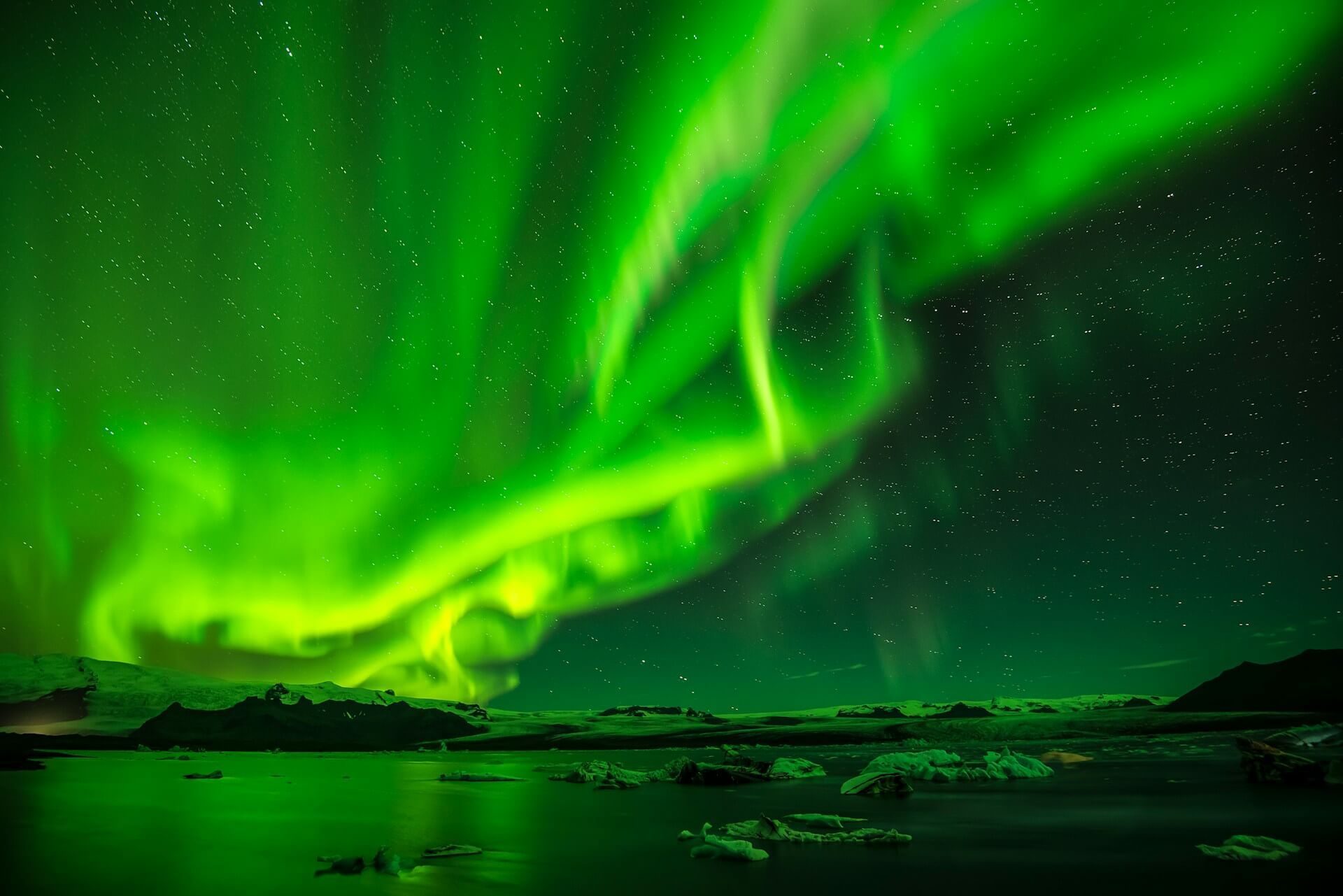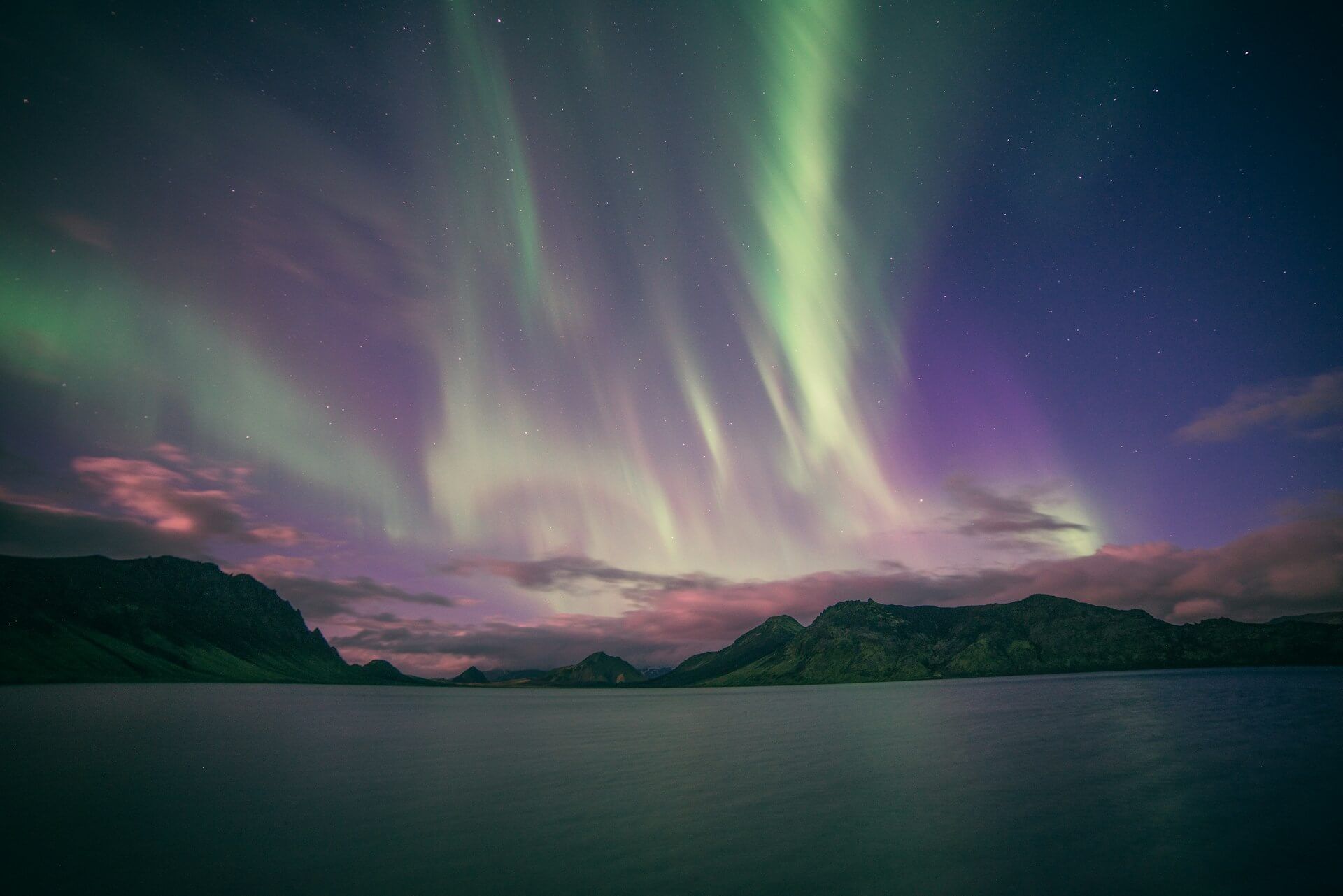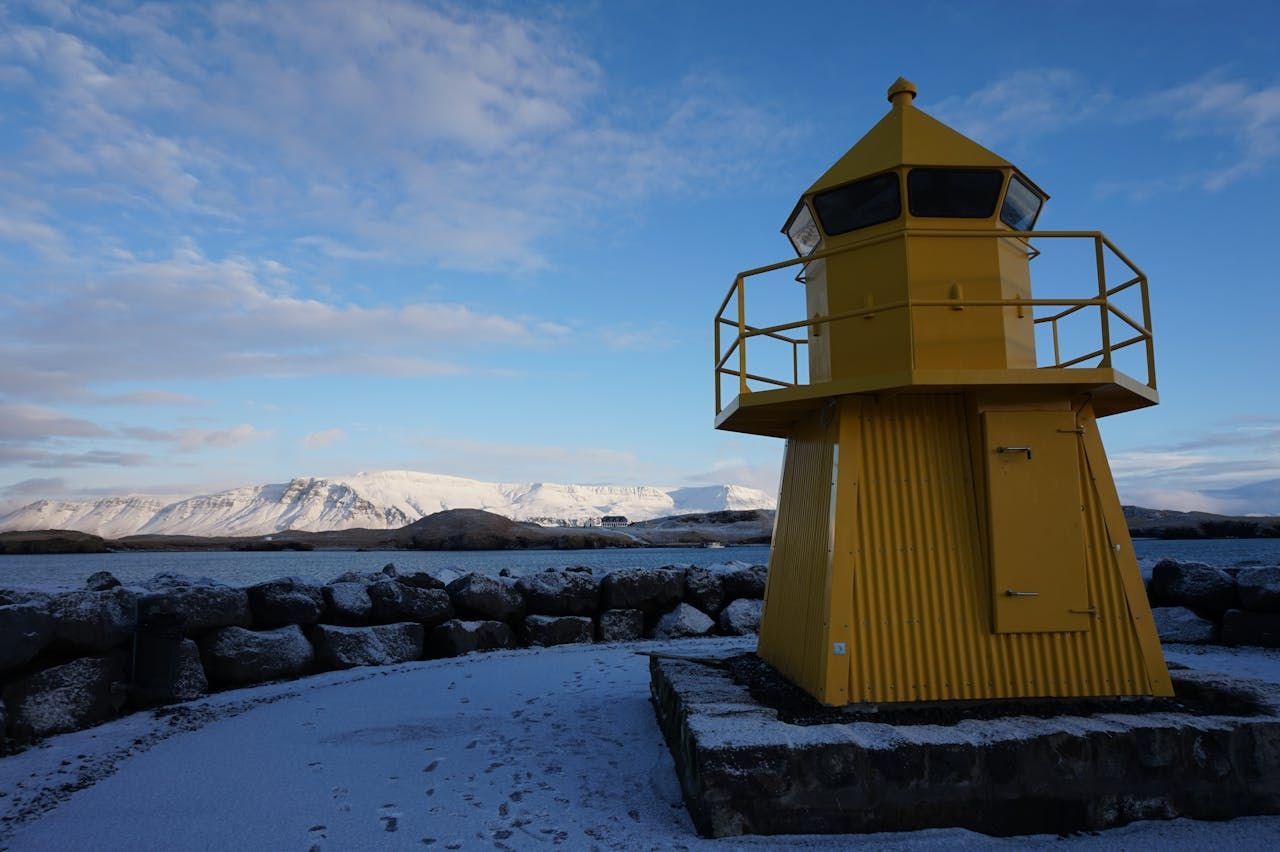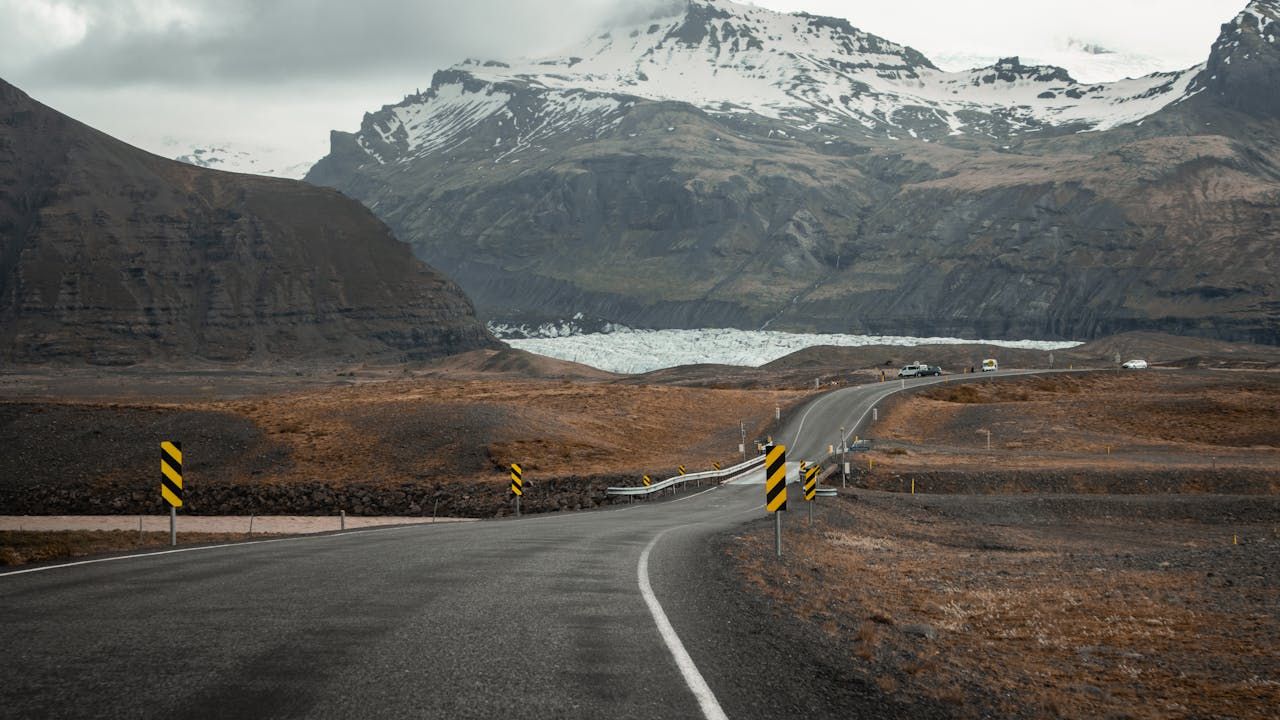Iceland is the land of fire and ice, and, if you time it right, the land of shimmering, dancing lights in the sky. You’ve probably dreamed of seeing the Northern Lights (Aurora Borealis), and Iceland is one of the best places on Earth to witness this magical spectacle. But knowing the best time to see the Northern Lights in Iceland is crucial to making that dream a reality.
This guide will give you everything you need to plan your perfect Aurora-hunting adventure in 2025, plus tips to do more exploration with connection.

When is the Best Time to See the Northern Lights in Iceland?
So, when is a good time to see the Aurora Borealis in Iceland? The short answer: winter. But let’s break it down:
-
September to April: These are the best months to see the Northern Lights in Iceland. You need darkness, and Iceland has plenty of that during these months. The long nights provide the perfect canvas for the Aurora to paint its colors.
-
November to January: Dark Nights, Bright Skies: These are arguably the peak months. You’ll have the longest hours of darkness, increasing your viewing opportunities. Just be prepared for colder temperatures and potential winter weather!
-
10 PM to 2 AM is Prime Aurora Time: While the Northern Lights can appear anytime it’s dark, the hours between 10 PM and 2 AM are statistically the most active. Set your alarm, grab a warm drink, and get ready to be amazed.
Why Iceland is the Ultimate Aurora Destination
Iceland’s unique combination of geographical location (high latitude), low light pollution over vast areas, stunning and diverse landscapes, and a well-developed tourism infrastructure makes it arguably the premier destination for viewing the Northern Lights. You’re not just seeing the Aurora; you’re experiencing it within a breathtaking and often otherworldly setting.

Photo by Jonatan Pie on Unsplash
Booking Tips for Lodges, Tours, and Everything In-Between
Book your accommodations well in advance, particularly if you’re traveling during peak season (November-February) or plan to visit popular areas like the south coast or Jökulsárlón. Consider staying in rural guesthouses, farm stays, or hotels outside of major towns for better darkness and reduced light pollution. Some accommodations even offer “Aurora wake-up calls” if the lights appear during the night. Examples include:
-
Hotel Rangá (South Iceland): Known for its Northern Lights viewing opportunities, outdoor hot tubs, and observatory.
-
ION Adventure Hotel (near Thingvellir National Park): A stylish hotel with a focus on sustainable tourism and excellent Aurora viewing potential.
-
Fosshotel Glacier Lagoon (near Jökulsárlón): Offers stunning views of the glacier lagoon and surrounding mountains.
Numerous tour operators offer guided Northern Lights tours, ranging from bus tours to super jeep excursions to boat trips. These tours can be a great option, especially if you’re not comfortable driving in winter conditions or want expert guidance on finding the best viewing spots. Some popular and reputable tour operators include:
-
Reykjavik Excursions: Excursions offers a variety of Northern Lights bus tours, including “hunt” tours that search for clear skies.
-
Arctic Adventures: Specializes in adventure tours, including Northern Lights super jeep tours and ice cave explorations.
-
Elding Whale Watching: While primarily focused on whale and dolphin expeditions, they also host boat expeditions for northern lights from the sea.
If you plan to rent a car, consider a 4x4 vehicle, especially if you’re traveling during winter or venturing into more remote areas. Familiarize yourself with Icelandic road conditions and driving regulations. Be prepared for icy roads and potential road closures.
Smart Hacks to Make the Most of Your Trip to Iceland
-
Go during the Shoulder Seasons: Traveling during the shoulder seasons (September-October or March-April) offers a sweet spot: good chances of seeing the Aurora, milder weather (typically), fewer crowds, and potentially lower prices on accommodations and tours.
-
Explore Less-Visited Regions: Venture beyond the popular Golden Circle and south coast to discover less-crowded areas with equally stunning Aurora viewing potential. The Westfjords, East Iceland, and the north of Iceland (around Lake Mývatn) are excellent options.
-
Be Patient: The Northern Lights are a natural phenomenon, and they don’t operate on a schedule. Be patient, be persistent, and be prepared to wait. The reward is well worth the effort. Bring a thermos of hot chocolate, some snacks, and warm clothing to make the waiting game more comfortable.
-
Stay Connected with Mobile Data: Stay connected while you travel—try Yoho Mobile’s free eSIM trial and get instant access to mobile data in over most countries. No SIM card, no contracts—just a quick setup and you’re online in minutes. If you want to get your eSIM plan afterwards, use the code YOHO12 at checkout for a 12% discount!
Best Locations to See Aurora in Iceland
Iceland is blessed with low light pollution in many areas, making it an Aurora hunter’s paradise. Here are some top spots:
Reykjavik (Yes, even in the city!)
While experiencing the Northern Lights within a city might seem counterintuitive, Reykjavik offers some surprisingly decent viewing options, especially when the Aurora activity is strong. Grotta Lighthouse, situated on the Seltjarnarnes Peninsula, provides a relatively dark escape just a short drive or walk from downtown, with the added bonus of a charming lighthouse as a foreground element.
Alternatively, the Perlan Dome, with its revolving glass structure, offers panoramic views from its observation deck. Although slightly brighter due to city lights, Perlan provides a comfortable indoor viewing option, particularly appealing on colder nights. These city locations offer accessibility and convenience, but keep in mind that Aurora’s brilliance will be somewhat diminished compared to more remote, darker areas.

Photo by Marc-Antoine
Vík í Mýrdal (Vík)
This village, nestled along Iceland’s dramatic south coast, is a photographer’s dream when the Northern Lights appear. Vík is renowned for its black sand beaches, the iconic Reynisdrangar sea stacks rising majestically from the ocean, and the striking basalt columns that line the shore. These geological wonders provide a stunning and unique foreground for the Aurora, creating truly unforgettable photographic opportunities. The village itself is small and has minimal light pollution, which further enhances the viewing experience, making it a popular spot for both casual observers and serious Aurora chasers.

Photo by Tobi &Chris
The Westfjords
For those seeking truly dark skies and a sense of remote wilderness, the Westfjords region in northwest Iceland is unparalleled. This sparsely populated area boasts rugged mountains, deep fjords carving into the coastline, and winding roads that offer breathtaking scenery. The lack of light pollution here is remarkable, allowing the Northern Lights to appear with incredible vibrancy and clarity.
While accessing the Westfjords, especially during the winter months, can present more of a challenge due to potential road conditions, the reward of witnessing the Aurora in such a pristine environment is well worth the extra effort for dedicated Aurora enthusiasts.
Þórsmörk (Thorsmork)
Named after the mighty Norse god Thor, Þórsmörk is a breathtaking mountain ridge and valley, a true haven for hikers and nature lovers. This stunning natural sanctuary is surrounded by glaciers and crisscrossed by glacial rivers, creating a landscape of unparalleled beauty. The almost complete absence of light pollution within Þórsmörk makes it an exceptional location for viewing the Northern Lights.
However, it’s crucial to note that access to Þórsmörk can be quite challenging, especially in winter. Due to river crossings and potentially difficult terrain, a specially equipped 4x4 vehicle and an experienced driver are often required, making this a destination best suited for those with appropriate vehicles and expertise or those participating in guided tours designed for the area.

Photo by Jonatan Pie on Unsplash
The Golden Circle
This immensely popular tourist route, conveniently located near Reykjavik, offers a fantastic opportunity to combine classic Icelandic sightseeing with potential Northern Lights viewing. Thingvellir National Park, a UNESCO World Heritage site, is not only historically significant as the location of Iceland’s first parliament but also provides vast, open spaces with minimal light pollution, ideal for observing the Aurora. The dramatic rift valley, marking the boundary between the North American and Eurasian tectonic plates, adds a unique geological dimension to the experience.
Further along the Golden Circle, the Geysir Hot Springs area offers the chance to witness the Strokkur geyser erupting under the dancing lights, a truly unforgettable spectacle. Finally, the powerful Gullfoss waterfall, one of Iceland’s most iconic landmarks, provides a dramatic and awe-inspiring backdrop for the Aurora, with the roaring sound of the water adding to the sensory experience.
South Coast Iceland
This stretch of coastline, easily accessible from Reykjavik, offers a string of breathtaking locations for Aurora viewing, each with its own unique charm. Jökulsárlón Glacier Lagoon is arguably the most famous, and rightfully so. Watching the Northern Lights dance above the floating icebergs, which have calved off the Breiðamerkurjökull glacier, is a truly magical and unforgettable experience. The reflections of the lights on the water and the shimmering ice create an ethereal atmosphere.
Just across the road, Diamond Beach presents a surreal landscape where icebergs wash ashore, their glistening surfaces reflecting the Aurora’s colors. Further west along the coast, the majestic Seljalandsfoss and Skógafoss waterfalls offer another captivating setting. The sound of the rushing water combined with the ethereal glow of the lights creates a powerful and immersive experience, with the added possibility of walking behind Seljalandsfoss (weather permitting) for a unique perspective.
East Iceland
The region presents great scenery with places like Egilsstaðir: This town serves as the main hub for exploring East Iceland and offers a good base for Aurora hunting. There are several dark-sky locations easily accessible from Egilsstaðir, and the surrounding mountains provide a beautiful backdrop. Further east Seydisfjördur: This picturesque fjord town, nestled at the end of a long, narrow fjord, is known for its colorful wooden houses and stunning mountain views. The surrounding mountains provide shelter from light pollution, making it an excellent location for Aurora viewing. The charming atmosphere of the town adds to the overall experience.
Seasonal Guide to Aurora Watching in Iceland
-
Autumn Adventures (September-October): Autumn offers milder temperatures and the possibility of seeing the Aurora reflected in unfrozen lakes and rivers. Plus, you’ll avoid the peak winter crowds.
-
Winter Wonders (November-February): December, in particular, is popular due to the long hours of darkness. Just be prepared for potential road closures and icy conditions. Embrace the snowy landscapes and cozy up with a warm drink while you wait for the show.
-
Spring Escapes (March-April): Spring brings longer days, but you’ll still have plenty of darkness for Aurora viewing. The weather is often more stable than in the deep winter, and you might even catch some wildflowers starting to bloom.

Photo by Thomas Tucker on Unsplash
Insider Secrets to Catch the Northern Lights
-
Master the Kp-Index: The Kp-index is a scale from 0 to 9 that measures geomagnetic activity. The higher the Kp-index, the stronger the Aurora is likely to be, and the further south it will be visible. A Kp of 2 or 3 is often enough for viewing in Iceland, while a Kp of 5 or higher indicates a major geomagnetic storm with spectacular displays. Several websites and apps provide Aurora forecasts based on the Kp-index.
-
Crystal-Clear Skies: Cloud cover is the enemy of Aurora viewing. Check weather forecasts frequently, and be prepared to drive to find clear skies. Iceland’s weather can change rapidly, so flexibility is key.
-
Light Pollution Hacks: Even near the capital, you can find relatively dark spots. Head away from the city center, towards the coast or inland areas. Parks and open spaces are your best bet. We especially recommend Grótta Lighthouse and Öskjuhlíð Hill.
Bonus: The Science Behind the Northern Lights
What Exactly Are the Northern Lights?
Let’s Break It Down: The Northern Lights (Aurora Borealis) are caused by charged particles from the sun (solar wind) colliding with the Earth’s atmosphere. These collisions excite atoms and molecules in the atmosphere, causing them to release energy in the form of light.
Why Do They Glow Green (and Sometimes Red or Violet?)
The color of the Aurora depends on the type of gas and the altitude of the collision. Green is the most common color, produced by oxygen at lower altitudes. Red can be produced by oxygen at higher altitudes or by nitrogen. Violet and blue are often produced by nitrogen.
Stories and Legends: The Myths That Make It Even More Magical.
Throughout history, cultures around the world have created myths and legends to explain the Northern Lights. In Icelandic folklore, the lights were sometimes believed to be the spirits of the dead or reflections from the shields of Valkyries.
FAQs About Seeing the Northern Lights in Iceland
How Accurate are Aurora Forecasts?
Aurora forecasts are based on scientific data, but they are not always 100% accurate. The sun’s activity can be unpredictable. Think of forecasts as a helpful guide, but be prepared for surprises!
Can I See the Lights in Reykjavik? Best Spots Revealed
Yes, you can see the Northern Lights in Reykjavik, but light pollution will make them less vibrant. Grotta Lighthouse and Perlan Dome are good options, as mentioned earlier.
Is Summer a No-Go for Northern Lights?
Yes, summer is generally not a good time to see the Northern Lights in Iceland. The near-constant daylight during the summer months makes it impossible to see the Aurora.
Can you see the northern lights with the naked eye?
Yes absolutely! One of the best parts of the show is watching it for yourself.
How long do the Northern lights last?
The lights can appear for short periods (minutes) or can last for longer periods (hours).
Best time of night to see the northern lights?
As we had already mentioned, it is recommended between 10:00 p.m. and 2:00 a.m.
Can you see aurora in daylight?
It is not possible to watch the Northern lights in daylight, only at night.
